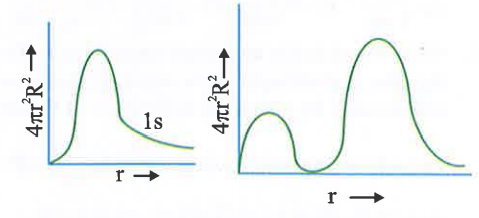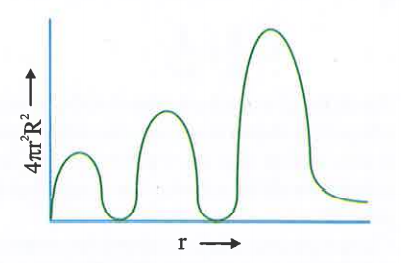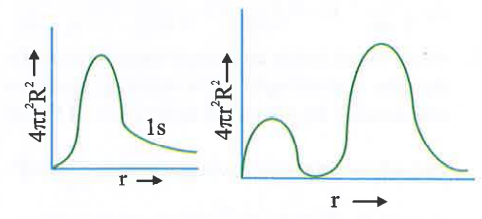Radial probability density function || Illustration OF Radial probability density function
Step by step video solution for Radial probability density function || Illustration OF Radial probability density function by Chemistry experts to help you in doubts & scoring excellent marks in Class 12 exams.
Updated on:21/07/2023Similar Questions
What is probability function??
View Solution(a) What is radial probability distribution curve ? Draw radial probability distribution curves for 1s and 2s orbitals.
(b) Discuss the similarities and difference between 1s and 2s orbitals.
(c ) How many nodes are present in 1s and 2s orbitals ?
View Solution
Knowledge Check
Probability density is given by
AΨB|Ψ|2Cde-Broglie wavelengthDHThe Schrodinger wave equation for H-atom is
∇2Ψ=8π2mh2(E−V)Ψ=0
Where ∇2=∂2∂x2+∂2∂y2+∂2∂z2
E = Total energy and V=potential energy wave function Ψ(rθϕ)R(r)Θ(θ)Φ(ϕ)
R is radial wave function which is function of ''r'' only, where r is the distance from nucleus. Θ and Φ are angular wave function. R2 is known as radial probability density and 4πr2R2dr is known as radial probability function i.e., the probability of finding the electron is spherical shell of thickness dr.
Number of radial node =n -l - 1
Number of angular node = l
For hydrogen atom, wave function for 1s and 2s-orbitals are:
Ψ1s=√1πaa0e−zr/a0
Ψ2s=(Z2a0)½(1−Zra0)e−Zra0
The plot of radial probability function 4πr2R2 aganist r will be:

Answer the following questions:
The following graph is plotted for ns-orbitals

The value of 'n' will be:A1B2C3D4The Schrodinger wave equation for H-atom is
∇2Ψ=8π2mh2(E−V)Ψ=0
Where ∇2=∂2∂x2+∂2∂y2+∂2∂z2
E = Total energy and V=potential energy wave function Ψ(rθϕ)R(r)Θ(θ)Φ(ϕ)
R is radial wave function which is function of ''r'' only, where r is the distance from nucleus. Θ and Φ are angular wave function. R2 is known as radial probability density and 4πr2R2dr is known as radial probability function i.e., the probability of finding the electron is spherical shell of thickness dr.
Number of radial node =n -l - 1
Number of angular node = l
For hydrogen atom, wave function for 1s and 2s-orbitals are:
Ψ1s=√1πaa0e−zr/a0
Ψ2s=(Z2a0)½(1−Zra0)e−Zra0
The plot of radial probability function 4πr2R2 aganist r will be:

Answer the following questions:
The value of radius 'r' for 2s atomic orbital of H-atom at which the radial node will exist may be given as:Ar=2a0Br=a04Cr=a0Dr=a05
For the hydrogen atom in its ground state, calculate (a) the probability density y (r) and (b) the radial probability density Ψ2(r) for r= a, where a is the Bohr radius.
View SolutionProbability density curve for 3s orbital
View SolutionPlot Of Total Probability Function
View SolutionConsider the following:
(i) The probability density for an l = 0 state
(ii) The probability density for a state with l = 0
(iii) The average of the probability densities for all states in an l = 0 subshell
Of these, which are spherically symmetric?
View SolutionStatement : All s-orbitla in H-atom corresponds to a non-zero probability density at nucleus .
Explanation : The probability density is given by ψ2 and ψ∝eZ2/2a0.
View Solution
